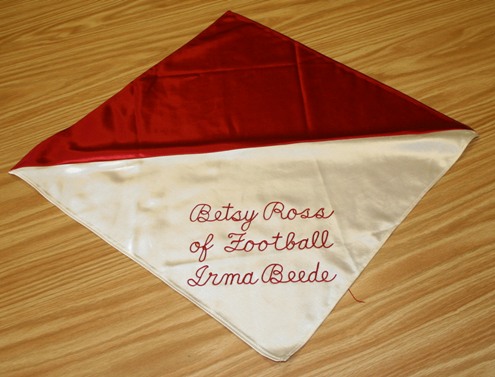|
History of the Football Penalty Flag |
Home | Administrator's Corner | Eligibility | Sports | News | Contact Us |
|
Photo and text credit to Youngstown State University Sports Information Department.
History of the Football Penalty Flag
In the game of football, a penalty flag is thrown when a rules infraction occurs during a game. The creation of that penalty flag was in Youngstown, Ohio. It was created by former Youngstown State University coach, Dwight Dike Beede on Oct. 17, 1941. The flag was first used in a game against Oklahoma City University at the Youngstown�s Rayen Stadium. Today the penalty flag is used in every competitive football game throughout the world. Before the introduction of the penalty flag, the officials used horns and whistles to signal a penalty. This made it difficult for fans and the media to know that there was an infraction on the field because they could not hear the signal. Beede said, �I always disliked the fish horn signal, figured it was a nuisance, irritating to the ears.� Jack McPhee, who was an official during the first game the penalty flag was used said, �Through the use of the signal flag, everyone in the stadium knows that something is wrong. It�s been a big help.� Beede came up with idea of the flag and had his wife sew it together. His wife, Irma Beede, later became known as the �Betsy Ross of Football� because she sewed the first flags together. He asked her to make a flag that had a bright color (red) with white stripes. The flags were put together using pieces of the Beede�s daughter�s old Halloween costume for the red part of the flag and an old sheet for the white part. She used some lead sinkers from Beede�s fishing tackle box to weigh it down. It was 16 inches square with the weight all at one end of the flag. The flag has been modified over the years and today it is yellow cloth that has sand in it to weigh it down. Beede came to an agreement with Oklahoma City Coach Os Doenges to use the flags as an experiment. Beede proceeded to ask the game officials to use the flag. �Do me a favor boys, instead of using the horns, try dropping these flags on violations. The fans never hear the horns. Besides its just an experiment.� The four game officials Hugh McPhee, Jack McPhee, Bill Renner, and Carl Rebele all agreed to use the flag. McPhee later used the flag at the Ohio State-Iowa game which happened to have the league�s commissioner, Major John Griffith, as a spectator at the game. He became very curious why the officials were throwing �rags� in the air when a penalty was called. Griffith was impressed with the idea after McPhee explained what was going on after the game. The flag was officially introduced at the 1948 American Football Coaches rules session. McPhee carried the original flag for many contests including games of Princeton-Yale and various Ohio State games until it faded. He made his way to the Rose Bowl, where the flag was tossed in front of 100,000 fans. Two of the original flags are on display in Mosure Hall on the fourth level in Stambaugh Stadium.
|

